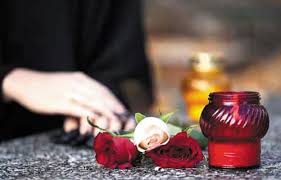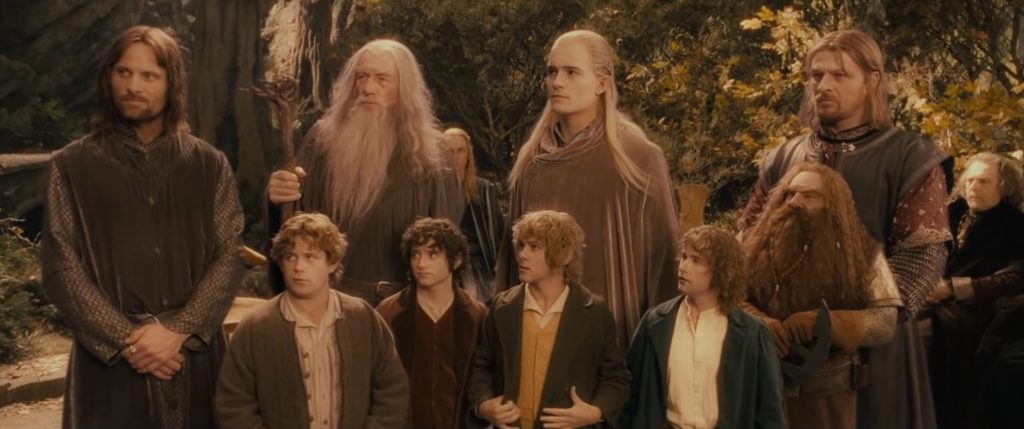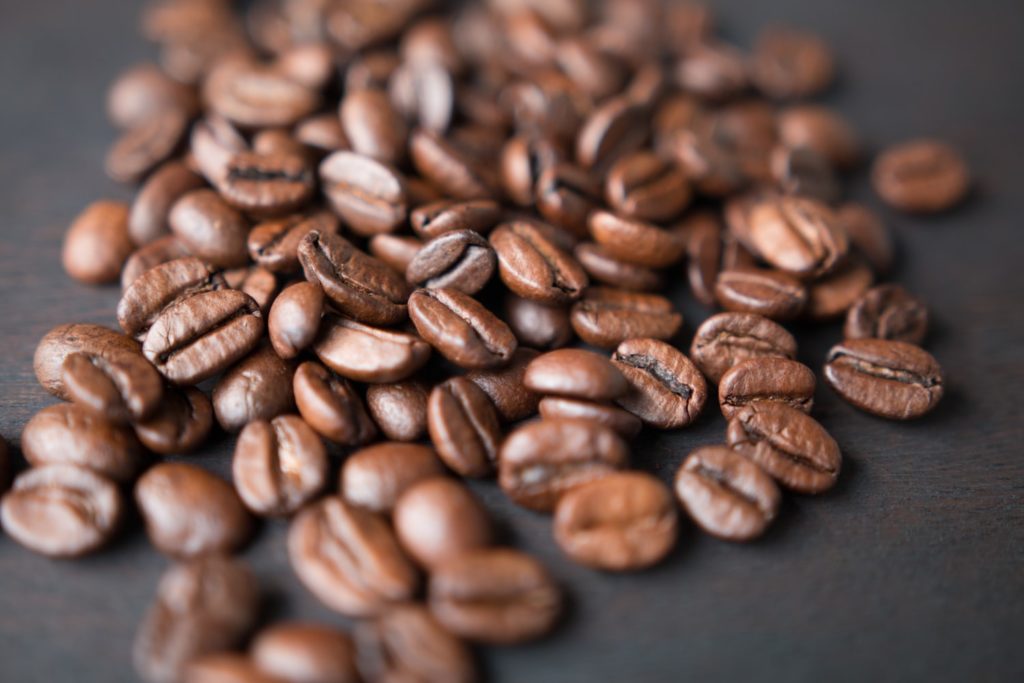All Saints’ Day has been celebrated in the Catholic Church since the ninth century. He was appointed by Pope Gregory IV on November 1 – in 837.
On All Saints’ Day, the Church remembers not only officially recognized saints, i.e., beatified, and canonized saints, but also all faithful deceased whose lives were marked by holiness. The Church sees them as her intercessors with God and examples to follow. All Saints’ intercession is invoked in particularly momentous events in the life of the Church. At that time, the Litany of the Saints is sung, which is one of the oldest litany prayers of the Church.
On November 1, the Roman Catholic Church celebrates All Saints’ Day. Initially, the holiday was celebrated annually on May 13 in honor of all martyrs for the Christian faith. In 731, Pope Gregory III set a new date for this holiday. The reason for the change was extremely pragmatic. The early medieval inhabitants of Rome had problems feeding the thousands of pilgrims coming to the Eternal City in the pre-harvest season, when the previous year’s food supplies were running out and the first summer harvest was still far away.
On November 1, people come to cemeteries to light candles and pray for the dead – their relatives and friends. It is also a holiday celebrated by some other denominations, as well as a custom practiced by non-denominational and non-believers, intended to be an expression of remembrance and devotion and respect to the deceased.
In 837, by the decree of Pope Gregory IV, on November 1, not only martyrs began to be remembered, but also all the saints of the Roman Catholic Church, i.e., people who had achieved the perfection of Christian life.
Liturgical celebrations of All Saints
On November 1, the faithful are obliged to participate in the Holy Mass. Solemn masses are celebrated in churches in memory of all saints and people whose lives were marked by holiness. In principle, All Saints’ Day is to remind everyone that every faithful person has a call to holiness and that after death they can achieve salvation. During the Holy Mass, priests are wearing white liturgical vestments symbolizing joy and emphasizing their sublime mood. After the liturgy is over, the priest leads a solemn procession to the cemetery, where a common prayer takes place over the graves. The holiday, contrary to what it might seem, has a joyful character.
The Somberness of All Saints derives from the honor of martyrs who gave their lives for Christ, and who were not mentioned in the local martyrdoms or in the canon of the holy mass.
The most beautiful prayers for the relatives of the deceased: for parents, for spouses, for children
According to tradition, as many breads were baked as there were people who died in the family. Handing bread to beggars, who were considered to be in touch with the afterlife, they were asked to pray for the souls of the dead. In some regions of Poland, beggars were also given groats, meat, and cheese. The bread was also offered to the priest to pray for the souls of those deceased, about whom no one remembered.
The custom of “feeding the dead” grew out of the pre-Christian tradition, when bread, honey and porridge were placed on the graves. Often, “forefathers” ceremonies were organized in cemeteries or in a nearby chapel. The souls of the dead were called up, tables were set, and people were sung, believing it would bring relief to souls.
Currently, candles and candles are burning in graves and cemeteries, which are symbols of remembrance of the dead. We also make sacrifices to the so-called gifts, printing the names of the precisely cards, asking the whole Church to pray for them.
The habit of “cuddling souls”
According to folk beliefs, on the night of October 31 to November 1, the souls of the deceased gathered at the Mass in the church, which was celebrated by the deceased priest. After the service, chaired by the priest, the souls were to take part in a gloomy procession in the cemetery.
It was commonly believed that it was on this night that the souls of the dead could visit the homes of the living. People tried not to forget to leave the doors and windows ajar for them. Great care was taken not to run into the soul residing in the house by accident. Before you sat down on a chair or bench, a slow hand movement was made to gently move the visitor from the afterlife.
Even at the beginning of the 20th century, there was a custom of “extinguishing souls” – especially for them, small breads (called peretycze or covers) were placed on the table, on which a cross and the initials of the deceased were imprinted. The women competed in decorating this kind of bread. The bread was prepared by the homemakers a few days earlier because it was believed that lighting a fire on All Saints’ Day would upset souls who liked to bask in the oven very much. If disturbed, they could start a fire. Often, along with the bread, a bowl of porridge and a bottle of vodka were left on the windowsill. In Podlasie, oat jelly was cooked especially for ghosts.
The practice of “caressing souls” is no longer practiced. This rite was replaced by gifts, i.e., prayers said by the priest for the names of the deceased. The dimension of this holiday also remained unchanged – the desire to express remembrance, gratitude, and closeness to all those who passed away.
Orthodox “Radonitsa”
The practice of preparing food for ghosts survived the longest among the followers of the Orthodox Church. In some places, according to the old custom, the Orthodox bake bread, cook dumplings, broad beans, kasha and Kutia, which they leave on the table with vodka all night. During the day they go to the cemetery, where they put all the dishes on the graves and sprinkle them with a few drops of vodka.
During their liturgical year, the Orthodox have several days devoted to prayers for the dead. The most important is “Radonitsa,” celebrated nine days after Easter Sunday, when vortals visit cemeteries in large numbers. However, due to the fact that All Saints’ Day in Poland is a day off from work and the substantial number of religiously mixed families, many Orthodox Christians visit cemeteries on November 1.
“Forefathers’ Eve”
Even in the interwar period, an inseparable element of this holiday was the presence of “begging grandfathers” in front of the gates of the cemeteries, also known as almoners, who were considered very pious people. Those on their way to the necropolises never refused them donations, most often in the form of food or small coins. It was commonly believed that the prayer of an almoner for a deceased person would help him achieve salvation or draw his soul out of purgatory. Pots with hot groats were often brought to the walls of the cemetery. Handing bread to my grandfather, it was divided into as many pieces as there were people who died in the family.
Most of the oldies gathered at the end of the 19th century on the several hundred meters long section stretching from the gate of the Bródno Cemetery in Warsaw. The almighty tried to look as disgusting as possible in order to collect as many donations as possible. There were also common fraudsters among them.
Times of Communism and All Saints
In the Polish People’s Republic, the authorities initially fought against the custom of celebrating the holiday. However, faced with resistance from the public, they decided to secularize the day of November 1, using the name All Dead or All Souls’ Day. In an attempt to eradicate this rite, the day off on November 2 was deliberately not established, which was traditionally dedicated to the memory of loved ones who died. Wanting to cultivate the old rite, Poles began to visit the graves of family members on the first, not the second, day of November. This custom is so deeply embedded in Polish rituals that few people are now aware of the original nature of All Saints’ Day.
November 1 now
November 1 is, in the Polish tradition, a day of remembrance not only about relatives who died, but also a day of national remembrance. The symbol of memory – candles – burn not only on the graves of family members. Candles and bouquets appear on insurgent graves, graves of those who died in all wars, people of merit for Poland and under chapels. It is a beautiful custom to light candles on nameless, abandoned graves.
All Saints’ Day is a day with a purely Christian character, to which the folklore has added pagan elements. Today, as centuries ago, when visiting the cemetery, the family meets in their own company for a ceremonial meal. In the past, such a meeting was accompanied by group prayers for the dead.
The day after All Saints ‘Day, the day of remembrance of the dead is celebrated – All Souls’ Day. For Christians, it is a day of prayer for all those who have departed from this world but are in purgatory and need our prayers to be saved.
All Souls’ Day in Christianity began with St. Odilon, abbot of the Benedictines of Cluny, France. This day was to be a counterbalance to pagan rituals honoring the dead. In 998, Odilon ordered prayers for the souls of the dead, designating the first day after All Saints’ Day, November 2.



